- OutThereJCH
- Posts
- From Nose to Tail: Discovering the Art (and Flavor) of Hog Head Cheese
From Nose to Tail: Discovering the Art (and Flavor) of Hog Head Cheese
Why you should consider making this dish at home.
Disclaimer: This post may contain affiliate links, which means I may receive a commission for purchases made through the links. I only recommend products I have personally used or recently purchased but not yet used.
Whole food is wild food
“This…this is what I want to be doing every day, all day. Just making food, sharing stories, just enjoying life.”
“Yup. This is what it’s all about.”
This was the exchange a friend and I recently had after processing two pig heads for what might be the food with the most significant difference between the appeal of its name and the deliciousness of the actual product.
I’ll get into the specifics of head cheese in a second, but the day was what I’ve come to call quintessential humaning. I’ve written about how so much of our daily human routine in this modern world is rooted in exchanging our labor for access to resources — mostly our free time — and how that exchange is often deeply exploitative and morally corrupt.
Put another way, most human beings living in modern civilization are overworked and enjoy far less freedom and experience far less fulfillment than we are socialized to believe they should. Many of us aspire to be wealthy enough not to have to work to provide for ourselves and our families. What do rich people do? Whatever they feel like doing, because they can afford to.
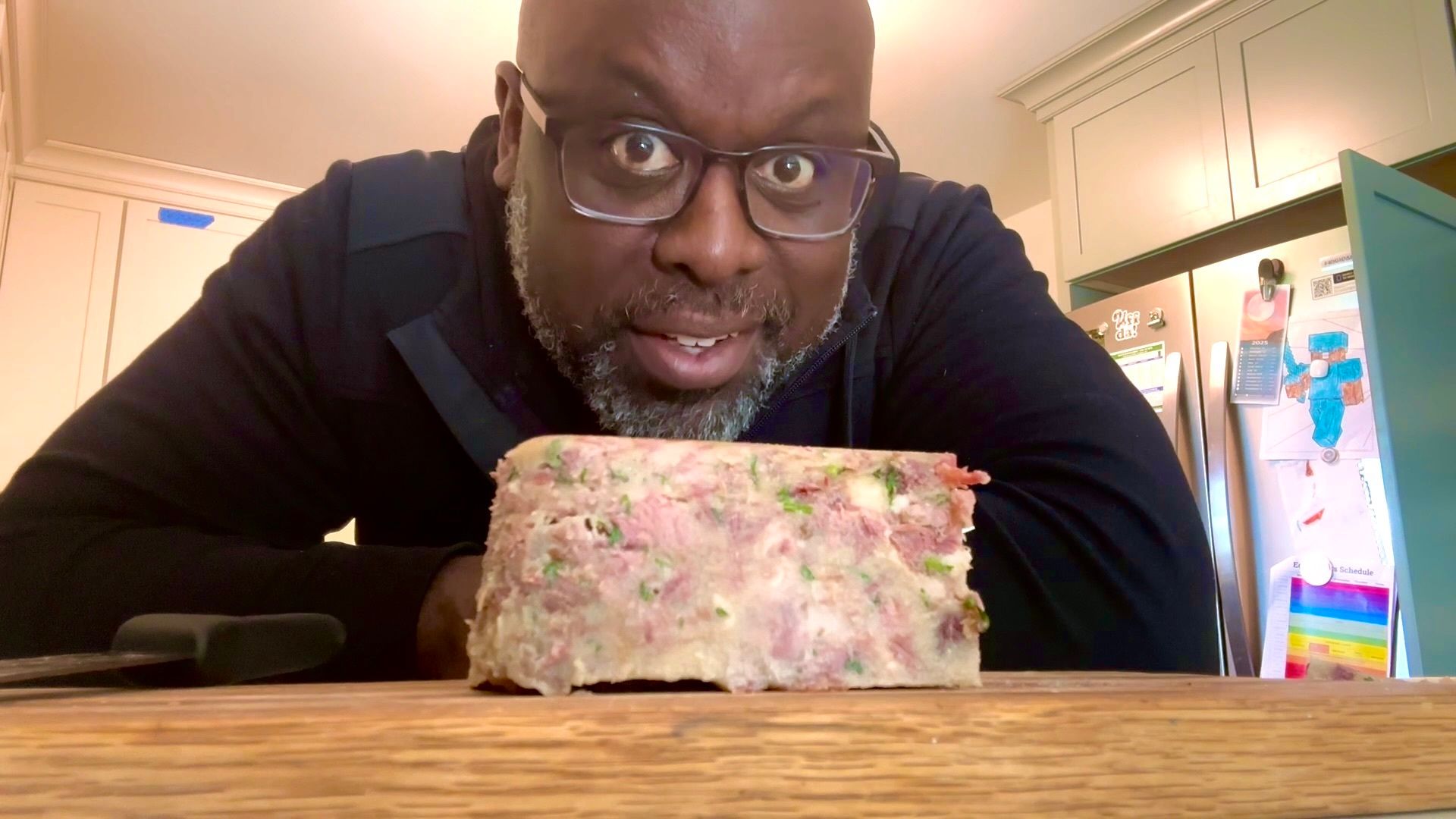
If you like spam, scrapple, or hot dogs, you’ll love head cheese. Trust me.
I love the question, “What would you do with your life if you didn’t have to work for money?” I’ve asked myself this question for years, and my answer is never “exactly what I’m doing for money now.” I’m working on changing that, but it always makes me sad to know that I’m not there yet, and that so many others are not there yet, also.
That moment, hands covered in pig fat from pulling meat of the skull, was a reminder of what I really enjoy about being alive. The head will taste good, but part of the taste is flavored with the care for the relative providing that nutrient, and the stories, laughs, and sharing my friend and I had during the process. What more could you ask for out of this life, and spending good time with good folks making good food? Nourishment upon nourishment upon nourishment.
From the rooter…
So, what is head cheese anyway?!
Well, it doesn’t involve any dairy, but it does involve a head. Typically, the head of a large mammal, which, hopefully, you saved. Processing the whole animal shouldn’t be a new concept for you to read about in this newsletter, but in case you are new, savvy consumers save the head!
For large animals like pigs, and even smaller animals like fish, there is a tremendous amount of nutrition to be had from the muscles and connective tissue that make up a head. Think of all the muscles involved in a pig rooting and chewing their food, the powerful mouths must have, and the flexibility and complexity of bone and muscle structures at the business end of these animals. Just look at the size of a pig's head!
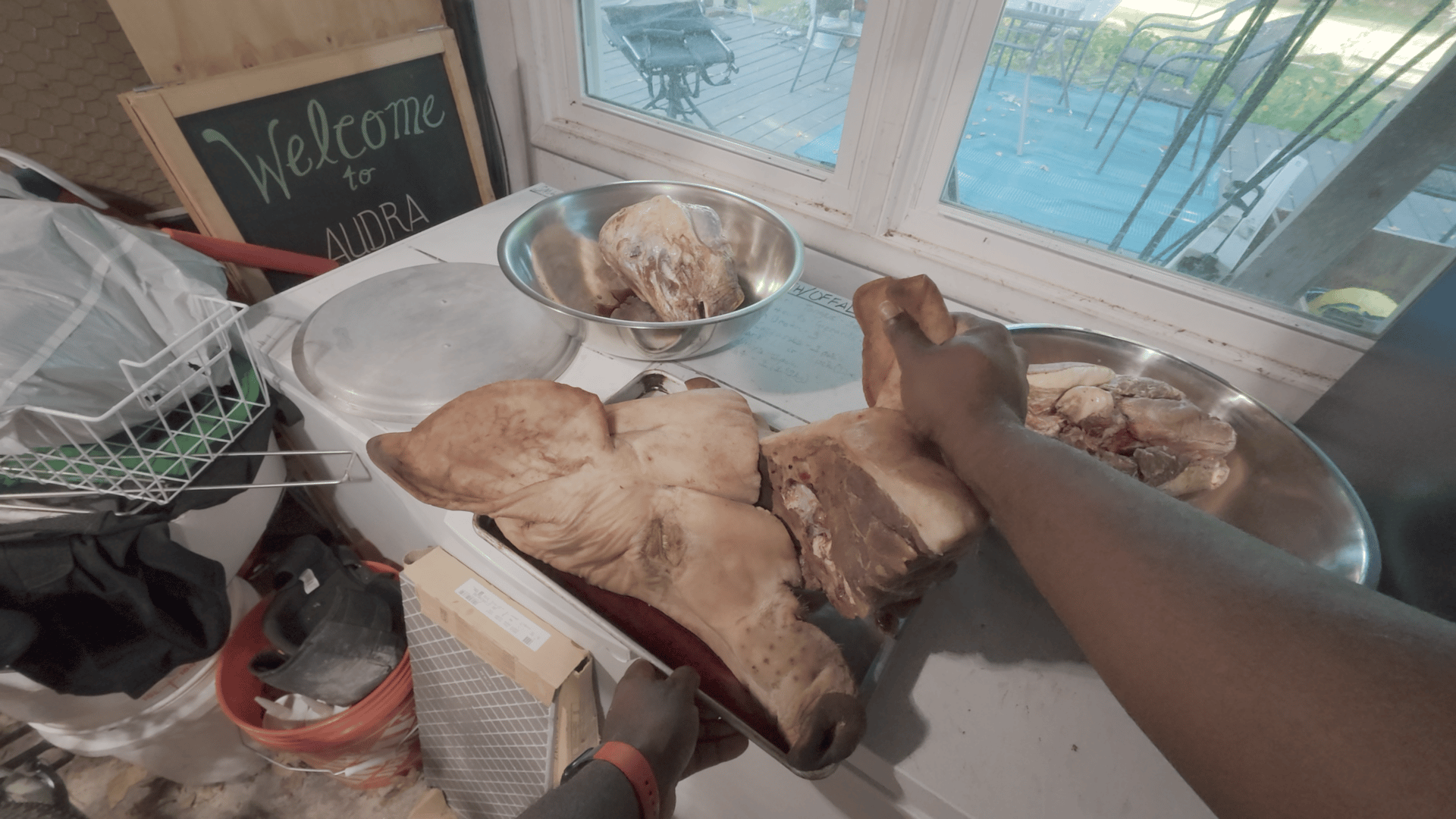
Halved pig head, fresh from 24 hrs of brining.
Yes, dealing with a head can be a bit gross. You’ve got saliva, boogers, ear wax, blood, brains, and eyeballs (a delicacy in many cultures). Then there’s the tongue, which is one of the more unappetizing parts of mammals. But, like the name head cheese, few things contradict their name and taste more than a well-prepared pig (or cow or buffalo) tongue.
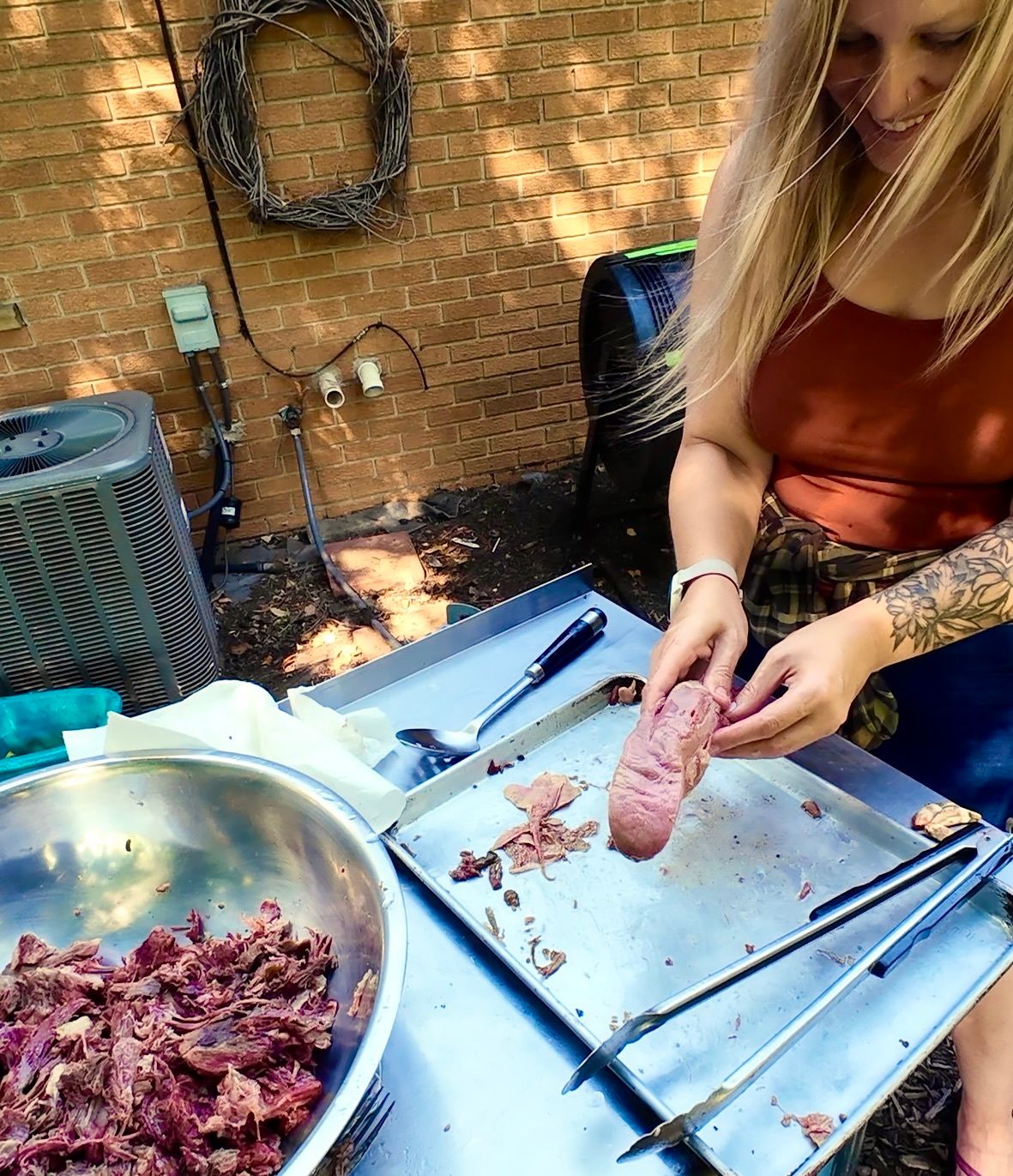
The tongue is easily the best cut of meat of this dish.
The key to preparing a head well is the same as the key to preparing any cut with a lot of muscle and connective tissue — steady, low heat. The double bonus of cooking a big ‘ole head is the broth that it creates. We’re talking about delicious, tender meat and buckets of gut-nourishing, hearty broth that you can use to make a variety of dishes. Incredible!
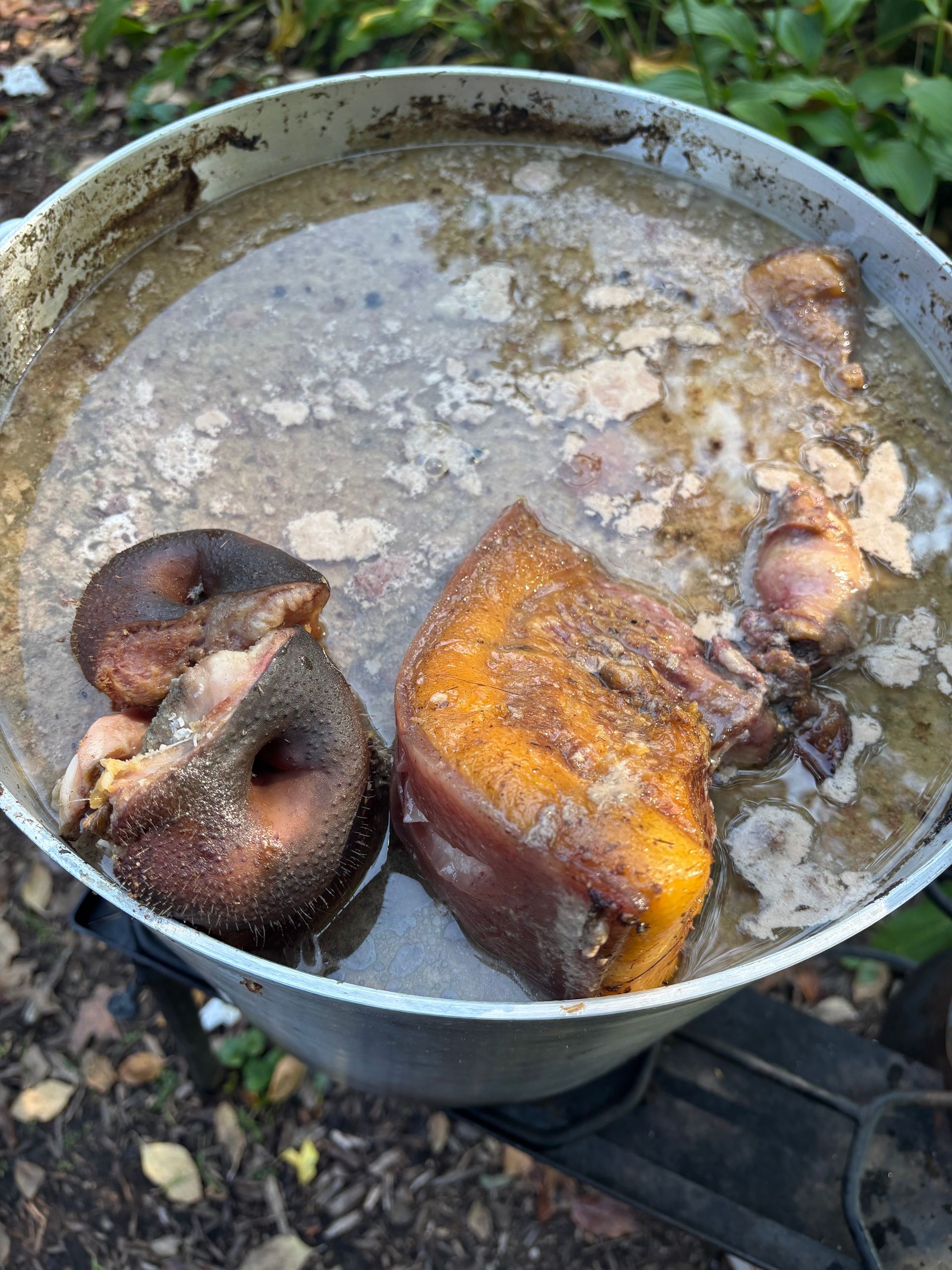
Early in the head boiling process.
For this recipe, we brined the heads before boiling them to season the meat and impart protection from botulism-causing bacteria, using pink salt #1. Thanks to the Forager Chef for a comprehensive set of instructions for making one of the most underrated charcuterie dishes out there.
Taking on the project of making head cheese is a multi-day process that, like making homemade sourdough, involves a lot of setting up the food to do its own thing, punctuated by a handful of actions that allow the product to shine.
Brining takes a full day, but all you have to do is combine the ingredients in water and add the head.
Boiling the head takes 3-4 hours, but once you fill the pot with fresh water, there’s nothing left to do but wait until the soft bits fall away from the hard bits.
Picking the head is probably the most labor-intensive part of this process, but it’s a fun and fascinating anatomy lesson that you know is going to lead to something delicious.
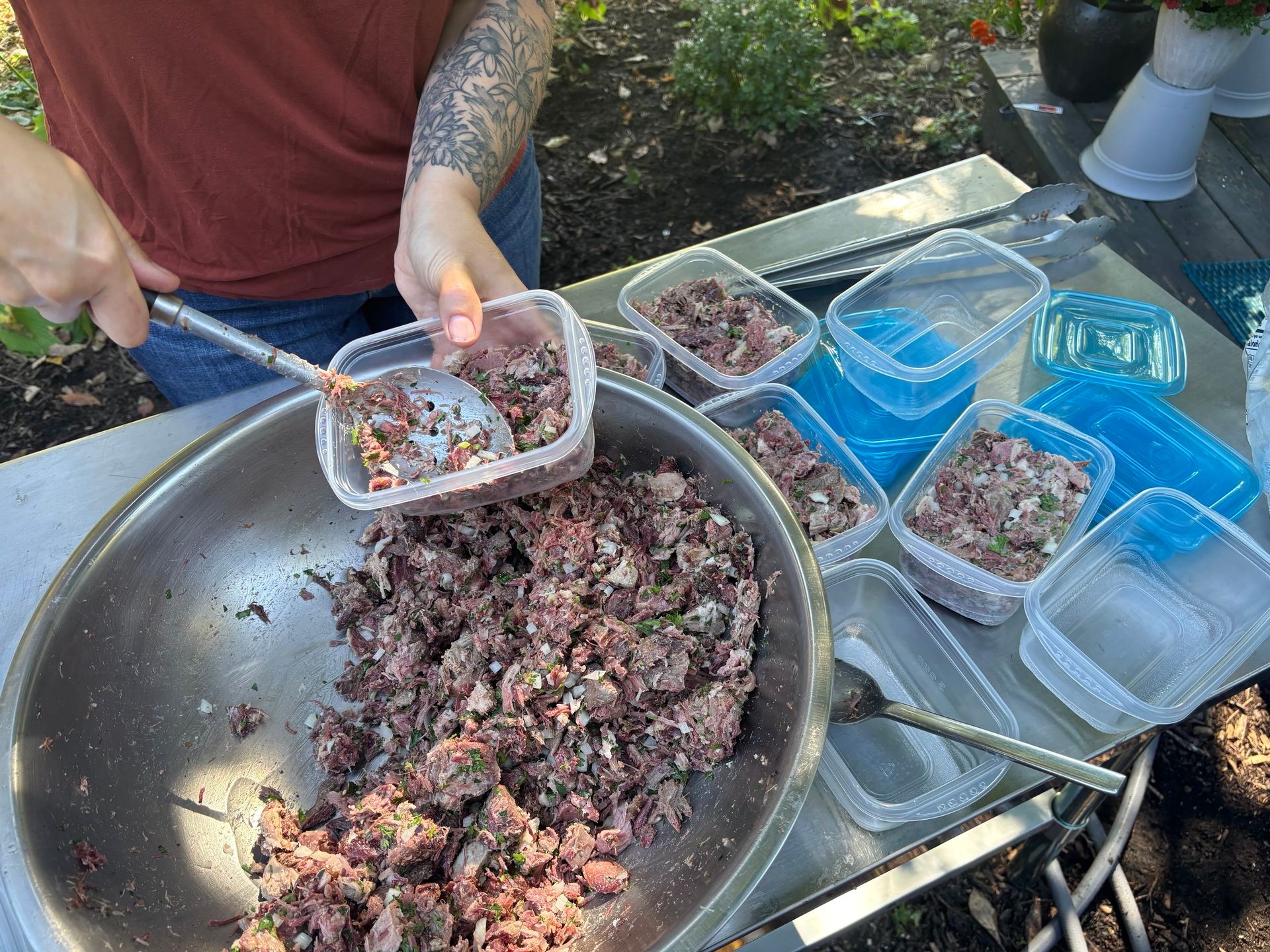
Assembling the final product.
Boiling down the broth takes another hour or two, but the process requires only occasional attention.
Combining the chopped meat with the concentrated broth in a turine or bread pan is about as complex as adding water to a cup of instant ramen.
We’re talking 4 days of “work” before you can eat, that includes maybe a total of 90 minutes of actual attention and labor.
…to the tooter
The finished product is a meat aspic (we really need to work on the verbiage, don’t we?) that’s something like spam, but way, way better. One thing I love about head cheese, which is characteristic of most homemade foods, is the ability to customize what you’re making.
I love head cheeses that incorporate fresh herbs and onions to enhance the multi-textured experience. Head cheese is primarily eaten cold, but you can warm it up or pan-fry it for a different experience that is almost as good.
People make head cheese because it’s delicious, but also because, for some, it was all they were allowed to have. Like so much of popular cuisine, the origins of this modern delicacy are rooted in poverty, denial, and oppression. Our socialized tendency to reject the true potential of the parts we consume, for the less controversial and straight-laced cuts, impoverishes our senses and leads us to believe that only the pretty things are substantive and worthwhile.
Head cheese has an unappealing name and doesn’t universally ignite our interest based on its appearance, unless you already know what this dish is.
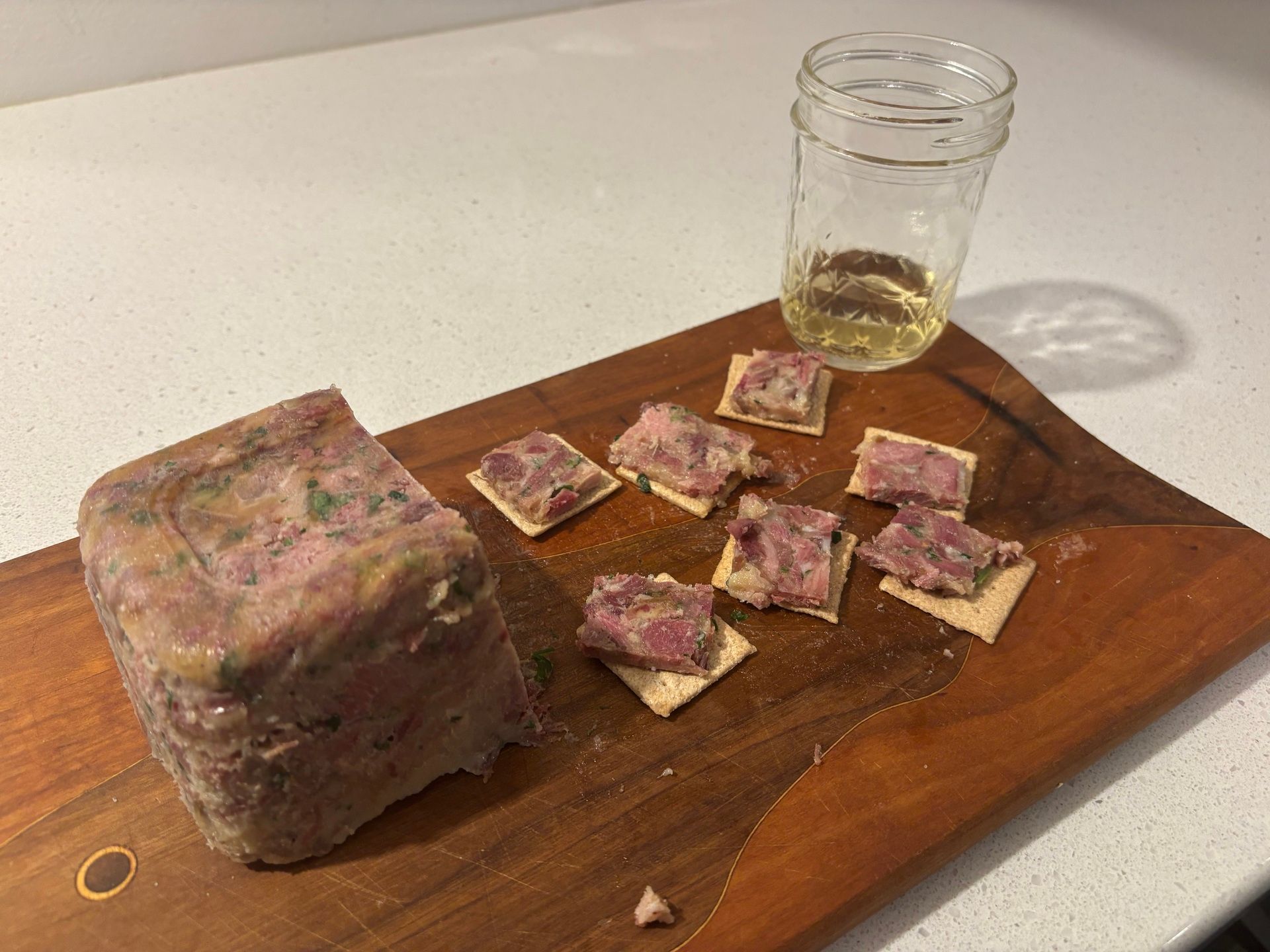
Head cheese, crackers, and white wine…Amazing!
But if you were only interested in the pretty cuts or the ones that are familiar to you, then you wouldn’t have subscribed to this newsletter.
The Wild Kitchen and the off-cuts.
Food is storytelling and story gathering, and nothing tells a story like an animal relative’s head. Nothing prompts us humans to share our stories better than working with our hands in community with others.
I’m always surprised by how often people are uninterested in what potential treasures can be found in animal parts they discard. I was surprised when I pushed myself past preconceptions and a social condescending attitude towards foods I was unfamiliar with. I have to fight that tendency every time I eat something other than muscle meat from a relative’s body.
Facing our food, where it comes from, how it's prepared, and the lessons a relative tells, even in death, are incredibly valuable. The wild thing is, you can buy pig heads for cheap, as only a small percentage of regular consumers know what to do with them.
I encourage you to get more out of the animals you consume, and push beyond how you’ve been socialized to think about who you consume, how you consume, and what you consume.
CONSIDER THIS
Watching cooking shows, I always wondered, but never consciously asked, “What do professional chickens store they’re prepped foods in?” These Cambro containers changed my cooking experience forever.
A lot of kitchen management involves efficiency and ease of use. Cambro containers are durable and ergonomically designed, making your home kitchen feel like a professional space. I put my grains, flours, prepared meats, and most often bone broth in these bad boys, and they never disappoint.
My favorite sizes of these containers are the 4-quart and 6-quart sizes, which are large enough to store a lot of product but small enough to fit well in fridges and freezers. They’re not cheap, but I’ve never broken one, and they can be used for a variety of purposes.


Reply